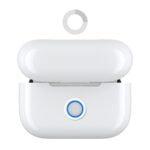Screenshots are an incredibly useful tool in our digital lives. Whether you need to capture proof of an online transaction, save a funny chat, document an error message for tech support, or simply share what’s on your screen, knowing how to take a screenshot is essential. For Mac users, Apple has made this process straightforward and versatile, offering multiple methods to capture exactly what you need. This guide will walk you through everything you need to know about taking screenshots on your Mac, from basic shortcuts to advanced techniques.
Capturing the Entire Screen
Sometimes, you need to capture everything visible on your display. macOS provides a simple keyboard shortcut for this:
- Press and hold these three keys simultaneously: Shift, Command, and 3.
- You will hear a camera shutter sound, and momentarily, a thumbnail of your screenshot will appear in the bottom-right corner of your screen.
- To edit immediately: Click on the thumbnail before it disappears. This allows you to quickly crop, annotate, or share your screenshot.
- To save automatically: If you don’t click the thumbnail, the screenshot will be automatically saved to your desktop as a PNG file, named something like “Screen Shot [date] at [time].png”.
Capturing a Portion of Your Screen
For times when you only need a specific part of your screen, macOS lets you select an area to capture:
- Press and hold these three keys together: Shift, Command, and 4.
- Your cursor will transform into a crosshair.
- Click and drag the crosshair to select the rectangular area you want to capture. As you drag, you’ll see a preview of the area being selected.
- Release the mouse or trackpad button to take the screenshot.
- Just like with full screenshots, a thumbnail will appear for quick editing, or the screenshot will save to your desktop.
Tips for capturing a portion:
- Cancel: If you decide not to take the screenshot, press the Esc (Escape) key before releasing the mouse button.
- Move selection: To reposition your selected area without resizing it, hold down the Space bar while dragging. This is useful for fine-tuning the position of your capture.
Capturing a Specific Window or Menu
Need to grab just a single window or a dropdown menu? macOS has a shortcut for that too:
- Open the window or menu you wish to screenshot. Ensure it’s active and visible on your screen.
- Press and hold Shift, Command, and 4, then press the Space bar once.
- The crosshair cursor will change into a camera icon.
- Click on the window or menu you want to capture. The window will be highlighted as you hover over it.
- A thumbnail will appear for editing, or the screenshot will save to your desktop.
Advanced window capture tip:
- Exclude window shadow: If you prefer a cleaner look without the window’s shadow, hold down the Option (⌥) key while clicking on the window to capture it.
Using the Screenshot App for More Options
For more advanced screenshot options and screen recording, macOS includes a dedicated Screenshot app.
- Open the Screenshot app: Press Shift, Command, and 5 simultaneously. Alternatively, you can find it by going to Applications > Utilities > Screenshot.
- A small toolbar will appear at the bottom of your screen, offering various capture and recording options:
- Capture Entire Screen: Takes a screenshot of the whole screen, similar to Shift-Command-3.
- Capture Selected Window: Allows you to select a window to capture, like Shift-Command-4 and Spacebar.
- Capture Selected Portion: Lets you draw a rectangle to capture a specific area, similar to Shift-Command-4.
- Record Entire Screen: Starts a video recording of your entire display.
- Record Selected Portion: Allows you to select an area to record as a video.
- Options: This menu provides settings for:
- Save to: Choose where screenshots and recordings are saved (Desktop, Documents, Clipboard, etc.).
- Timer: Set a delay (None, 5 seconds, 10 seconds) before the screenshot is taken or recording starts.
- Show Floating Thumbnail: Toggle the thumbnail preview on or off.
- Remember Last Selection: Remembers your last selected portion for quicker repeated screenshots.
- Show Mouse Clicks in Video Recording: Useful for tutorials and demonstrations.
Finding and Managing Your Screenshots
By default, all screenshots and screen recordings are saved to your Desktop. They are named with “Screen Shot” or “Screen Recording” followed by the date and time.
Quick access:
- Finder: If you can’t immediately see your screenshot, open Finder, and in the menu bar, click Go > Desktop, or select Desktop from the Finder sidebar.
Saving to Clipboard:
- To save a screenshot directly to your Clipboard instead of saving a file, hold down the Control key in addition to the standard shortcuts. For example, Control-Shift-Command-3 will take a full screenshot and save it to your clipboard, ready to be pasted (Command-V) into documents, emails, or image editors.
Mastering Screenshots on Mac
Taking screenshots on a Mac is a fundamental skill that can greatly enhance your productivity and communication. By mastering these different methods – capturing the full screen, portions, windows, and utilizing the Screenshot app – you’ll be well-equipped to capture anything you need on your Mac’s display. Experiment with these techniques and find the methods that best suit your workflow. Happy capturing!

